Table of Contents
So you’ve just had knee replacement surgery, and like hundreds of patients have experienced, the healthcare team is recommending home discharge after just a few days in the hospital post-surgery.
You are probably wondering, “How to prepare”, “What your options and equipment needs are”, and “What are some of the general rehabilitation guidelines to follow after a knee replacement”. Those are the questions that I will be answering in this blog, and hopefully, you will find this information particularly useful for your situation.
Recent studies have shown an increase in people particularly the older adult population living with hip or knee replacements, estimating over 7 million people in the United States living with either a hip or knee implant.
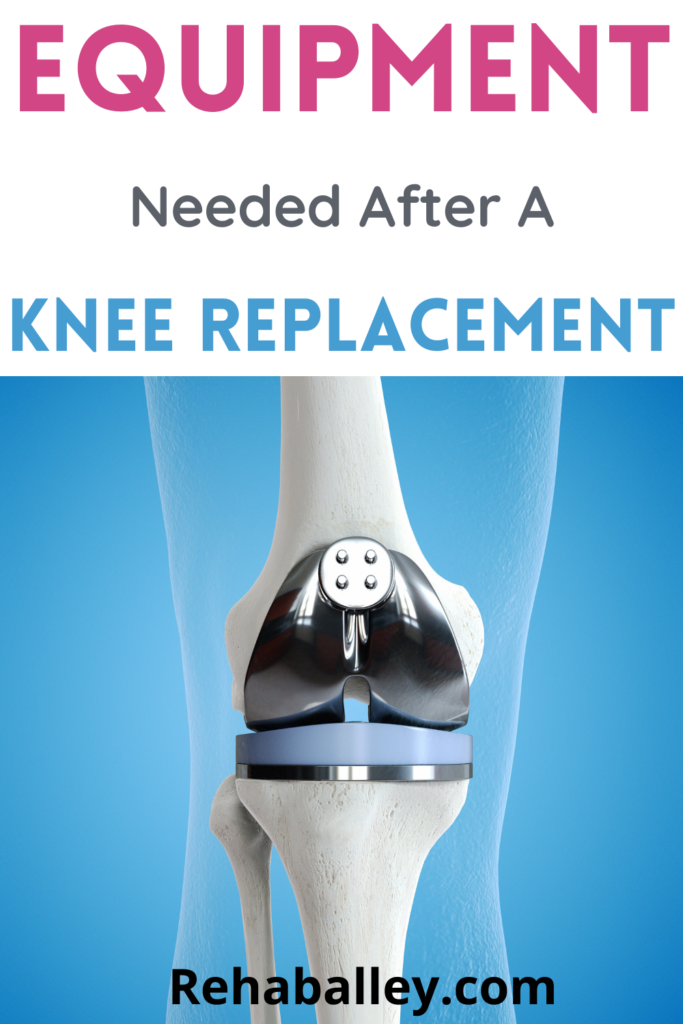
Depending on the success of the surgery and your prognosis, most people will be discharged home within days after surgery. For this reason, it is important to know what to expect and the equipment you will need to help you recover at home.
Property of rehaballey.com
Due to the nature of a total knee arthroplasty which typically involves cutting the quadriceps muscle tendon, along with removing the knee cap, cutting through the damaged bone and cartilage, and then replacing these areas with metal components using a spacer in between to allow the knee joint to glide smoother on the implants, patients should expect the following:
- Significant bruising
- Swelling
- Stiffness
- Pain
- Muscle weakness (particularly the quadriceps muscle located on the top of the thigh)
Patients should not expect:
- Extreme warmth
- Sudden increase in drainage from the usual
- Foul Smell
- Fever
- Rash
- Change in color of drainage
These are all signs of possible infection. If you notice this, it is important to notify your doctor as soon as possible.
Although the surgical implant allows for adequate range of motion through the knee joint, the swelling, pain, and natural scarring that comes with the healing process, make it difficult to actively range the knee to perform certain activities and tasks.
There are also several different types of surgical procedures, other than a total knee arthroplasty that can be performed depending on the type of injury. For this reason, the surgeon may also place you on weight-bearing restrictions (Link), making it more difficult to complete daily tasks independently.
Patients can expect between 4-8 weeks of healing before being able to complete daily activities independently and may take several months to a year for the knee to completely regain its function.
Property of rehaballey.com
Early in the healing process, you may find yourself needing equipment to assist you with your daily functional activities. Listed below are some of the most common equipment needs that I typically recommend to patients following knee surgery.
MOBILITY EQUIPMENT
Rolling Walker (LINK)
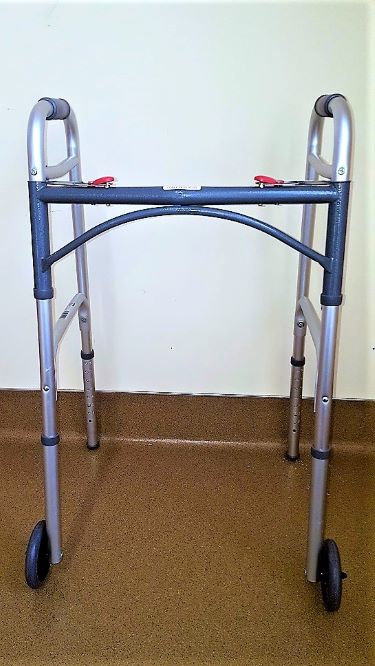
Most patients find that because of the pain, weakness, and swelling in their knee, walking can become quite difficult.
Furthermore, if the surgeon has placed you on a weight-bearing restriction, then it is imperative that patients start off using a walking device such as a rolling walker to offload the knee joint and assist with walking tasks while the knee is healing.
In some cases the patient may be able to use other assistive devices such as a cane or crutches; however, a rolling walker is preferred early in the healing process because it provides the most stability.
In my blog titled Where to Buy Walkers For Seniors: A Review of (2) Main Types of Light-Weight Walkers For The Elderly (Link), I discuss the (2) main types of rolling walkers and give recommendations for each.
Wheelchairs (LINK)
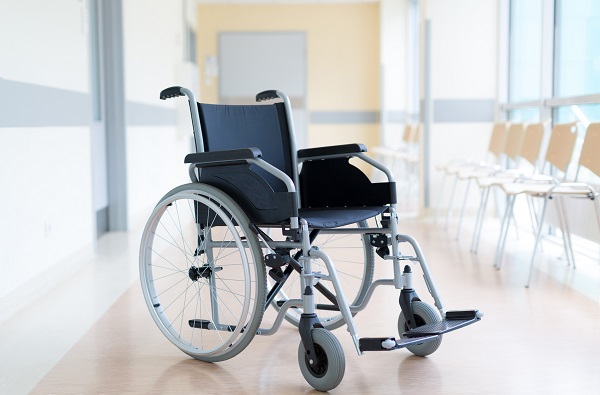
Wheelchairs are typically not as commonly recommended, especially if walking is the goal. However, for patients who are not expected to walk either due to certain precautions, other co-morbidities, or previous level of function, a wheelchair may be necessary in the absence of the ability to walk.
ADAPTIVE EQUIPMENT FOR DAILY TASKS
Reacher (Link)
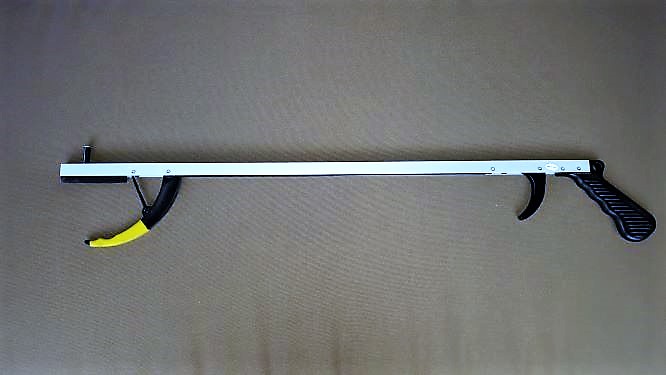
Patients may find this particular device helpful, as it reduces the need for bending over to pick up objects from the floor or lower surfaces. This device usually comes in (2) different sizes: short and long, and comes with jaws on the end of the grabber that can be used to retrieve small-medium sized items from the floor or uneasy-to-reach surfaces.
Sock Aide (LINK)
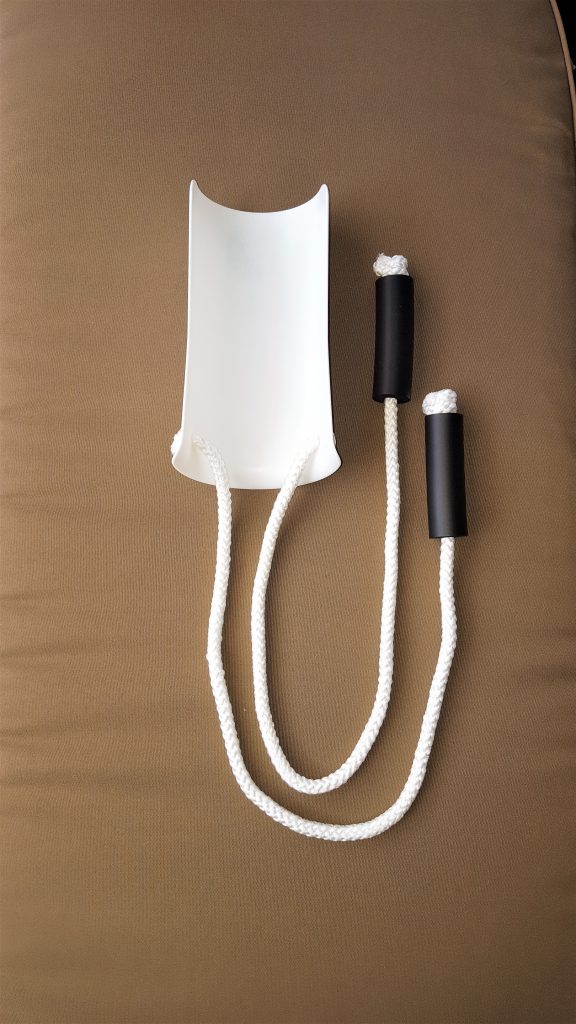
This device is also helpful, particularly with dressing tasks. The sock aide comes equipped with either a handle or strap on the end and allows the user to put on socks without bending over. The only downside is that the sock aide can not be used to remove socks; however, the reacher listed above can also be used for this purpose.
Shoe Horn (Link)
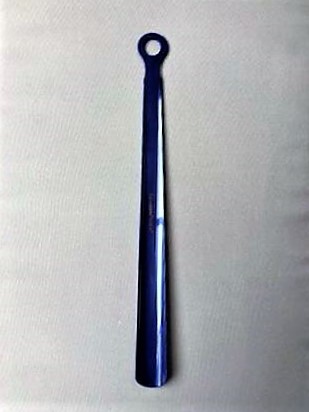
A shoehorn is very useful in that it holds the back of the shoe in place, allowing the user’s foot to slide easier & smoother into their shoe. This may be particularly helpful after knee surgery because it also reduces extra stress & discomfort on the knee joint from bending over.
Leg Lift (LINK)
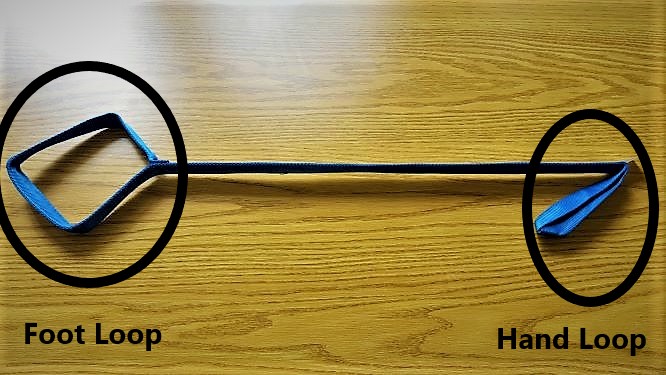
This is one of my favorite devices to recommend to patients. The leg lift comes with a handle on one end for gripping and a loop on the opposite end.
The user places their foot in the loop and uses the other end to lift their leg for various tasks such as getting in and out of bed and can even assist with performing certain exercises.
ALLEY TIPS: Now, the goal for physical rehabilitation is for the patients to gain enough strength to lift their leg without needing external assistance; however, this device can assist early in the rehabilitation process when weakness is still an issue. This also increases the user’s independence.
Elastic Shoe Laces (LINK)
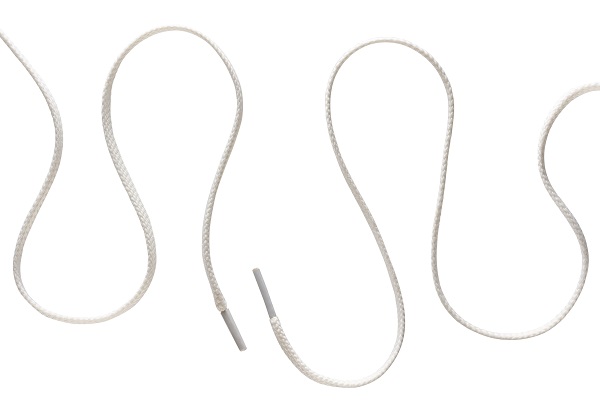
As the name implies, these are elastic shoelaces also known as no tie shoelaces. No tie shoelaces fit securely through the eyelets of a shoe and are meant to hold its form preventing the need from bending over to tie the shoe.
Property of rehaballey.com
ALLEY TIPS: All Of the items listed above that can be used to assist with dressing tasks can be purchased as a set known as a hip kit. Click this LINK for additional details and purchase information.
BATHROOM EQUIPMENT
Shower Chair (LINK)
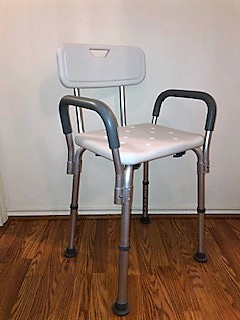
A shower chair is used inside of a walk-in shower and allows the user to be able to sit to complete their bathing task. These shower chairs can be adjusted to fit the user’s height, and can either come with or without handles.
For individuals with more balance deficits and/or weakness, handles provide extra safety and assistance for standing.
Transfer-Tub Bench (LINK)
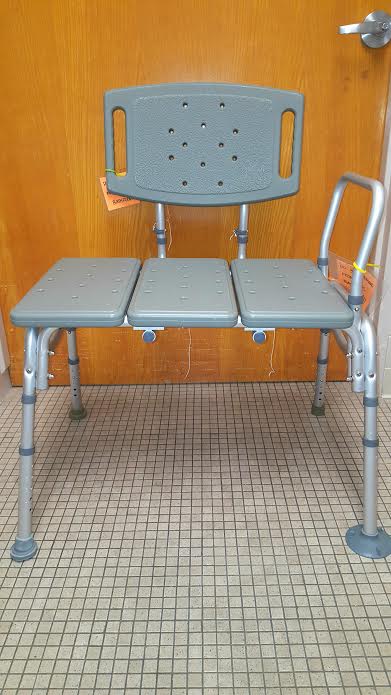
A transfer-tub bench like the shower chair also allows the user to be able to sit to complete their bathing task. The difference, however, is the location of use. Shower chairs are designed for use inside of a walk-in shower whereas the transfer-tub bench is used for bathtubs.
The end of the transfer-tub bench hangs slightly outside of the tub and allows the user to be able to sit and slide in and out of the bathtub rather than standing and stepping over the bathtub.
ALLEY TIPS: The transfer-tub bench may be difficult to use in larger bathtubs and garden tubs. For this reason, some patients will use the shower chair inside of the tub; however, there are safety risks to this technique.
Bedside Commode (LINK)
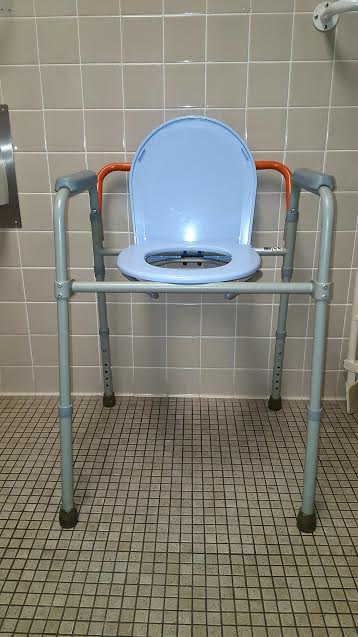
These devices are particularly handy because it can be used as a 2-in-1, meaning it can either be used as a commode to be kept close to the bed, or it can be used over a standard toilet for the purpose of increasing its height. These devices also come with handles on each side and can be adjusted to the user’s height.
Grab Bars (LINK)
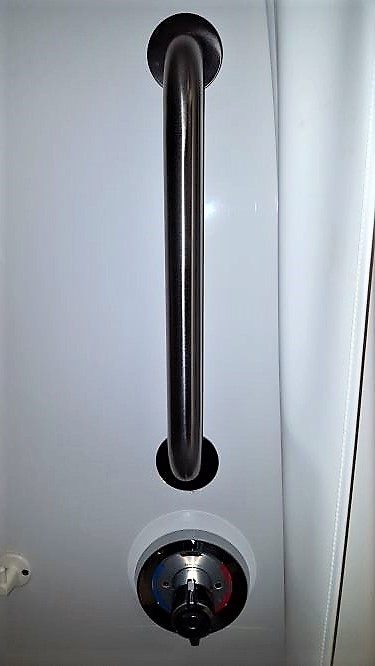
Grab bars are particularly useful in the bathroom and are used for balancing when transferring in and out of the shower or bathtub.
Due to the potential risk for falls, I recommend grab bars especially for older adults post-surgery, whose balance is compromised.
Property of rehaballey.com
GENERAL REHABILITATION PROTOCOL
There are some general guidelines to follow after your knee surgery that will help with the recovery process. Listed below are some general do’s and don’ts; however, always speak to your doctor or surgeon regarding your specific needs.
DO’s
- Do Ice your knee for 15-20 minutes each day, several times a day
- Do your exercises as prescribed by your doctor or physical therapist
- Do use the recommended adaptive equipment to assist with your daily task
- Do take your medications as prescribed by your doctor
- Do watch for signs of infection and notify your doctor if infection occurs.
DON’TS
- Don’t use heat on your knee as this will increase the swelling during the healing process.
- Don’t sleep with a pillow or any other object under your knee
- Don’t use weights on your legs during exercise, unless specifically instructed to do so by your doctor or therapist
- Don’t engage in any running or jumping activities
Hopefully, this blog assist you with your equipment needs and help you make better purchasing decisions after knee surgery. As always, discuss with your doctor, surgeon, or therapist when it comes to your specific needs.
For more information on my equipment recommendations, feel free to visit my website at https://rehaballey.com/. And as always GOD BLESS YOUR ENDEAVORS!!

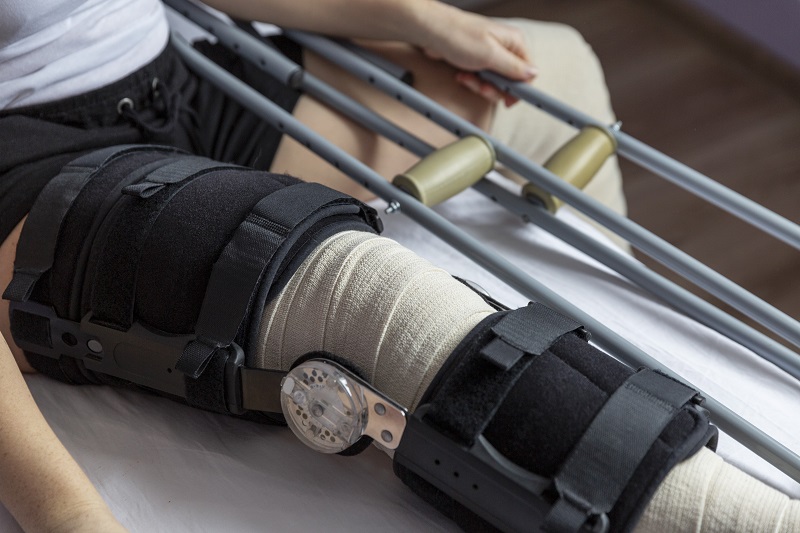
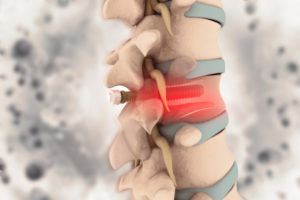
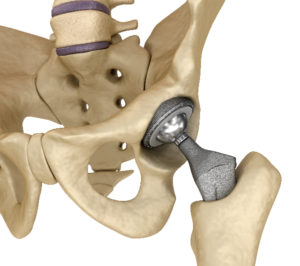
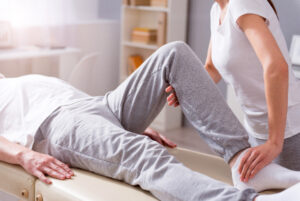
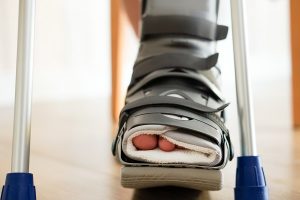
Muchas gracias por sus consejos
Tengo un poco de miedo porque yo nesecito remplazo de mis 2 rodillas
Don’t you have or recommend CPM machine to move knee joint, an speed healing an prevent stiffness?
Hi Jac, Yes CPMs can be a useful tool after knee replacement, however, in this blog, I wanted to cover adaptive and mobility equipment that you would need when you go home. CPMs are mostly used in the hospital setting. Most rehab facilities are actually getting away from the use of CPMs because research supports more of an active approach to knee healing and improving ROM such as walking and exercise.